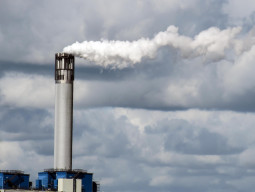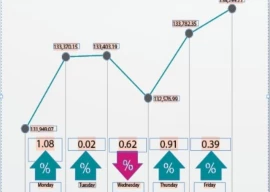
“With the tightening of macroeconomic conditions in CY18 and later, the inflow of fresh non-performing loans (NPLs) have been on the rise,” the State Bank of Pakistan (SBP) reported on Monday.
NPLs increased 13% to Rs768 billion during the first half of the current calendar year ended June 30, 2019, SBP said in Mid-Year Performance Review of the Banking Sector (January-June 2019)
The higher defaults during H1CY19 were restricted to the energy and agribusiness sectors. “Energy sector contributed 52.8% to the total increase in NPLs during H1CY19, while agribusiness contributed 18.6%. Most of the NPLs in the energy sector (96.8%) pertained to the public sector entities associated with electricity generation and transmission that faced constrained cash flows (due to circular debt/low recoveries),” the SBP said in the report.
In the case of agribusiness, however, an element of seasonality exists in the classified loans as they peak around the second quarter of each calendar year but then recede in subsequent quarters. Besides this seasonal phenomenon, other factors responsible for the rise in NPLs included the late start of sugarcane crushing season, water shortage and drought conditions affecting crop yields, and delay in the sale of the newly harvested Kharif crops by farmers hindering their repayment capacity (rice, cotton, and others), etc, it said.
Furthermore, a 20.8% contribution to the growth in NPLs came from banks’ overseas operations, largely related to operations in the Middle East. “In addition to rupee depreciation, the economic slowdown in some of these countries could be the reason for the higher NPLs,” it said.
“The infection ratio (NPLs to total gross loans) increased to 8.8% by the end of H1CY19 (8% by end of H2CY18),” the SBP said in the report.
“Owing to perceived weakening in repayment capacity of firms and the recent pick-up in the NPLs, banks may remain risk-averse in their lending behavior,” it said.
The fresh rise in domestic NPLs was mostly concentrated in a few local private banks as well as in a specialised bank. Consequently, the infection ratio for local private banks and specialised banks increased to 7% compared to 6.2% by the end of H2CY18 and 43.2% compared to 32.9% by end of H2CY18, respectively.
However, the profitability of the banking sector surged with after-tax profits of Rs82.7 billion during H1CY19, a rise of 8% over the comparable period of last year.
Advances to private sector slow down
Among the advances, the flow of private-sector advances showed a broad-based slowdown owing to subdued economic activity and continued monetary tightening, while the flow of public sector advances declined due to lower utilisation of commodity financing and retirement of energy sector advances.
Published in The Express Tribune, October 22nd, 2019.
Like Business on Facebook, follow @TribuneBiz on Twitter to stay informed and join in the conversation.


















COMMENTS
Comments are moderated and generally will be posted if they are on-topic and not abusive.
For more information, please see our Comments FAQ